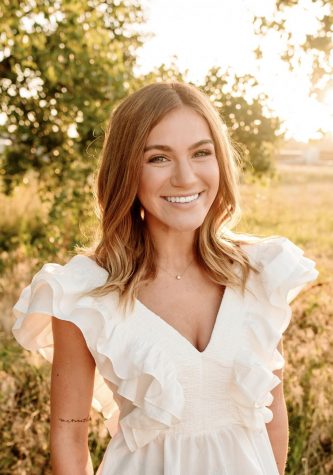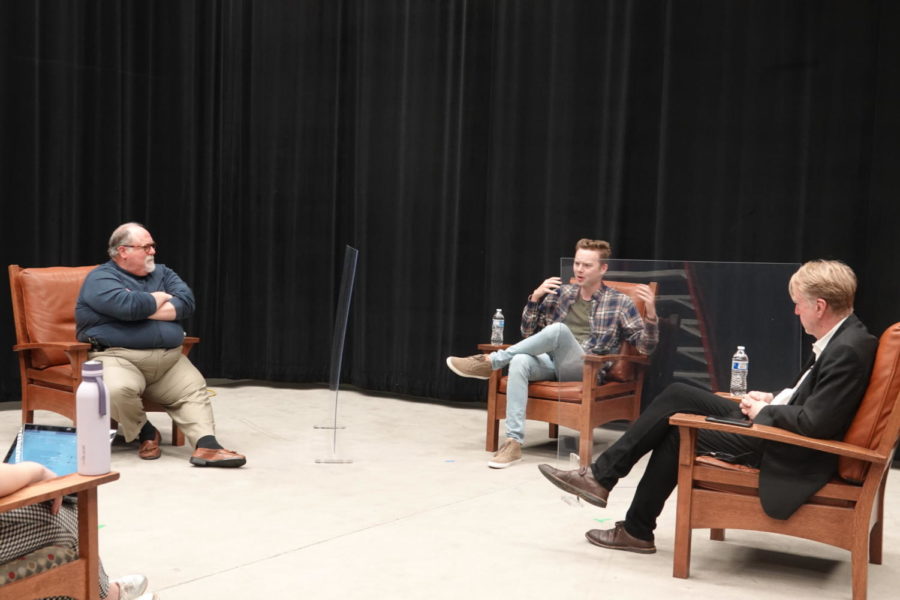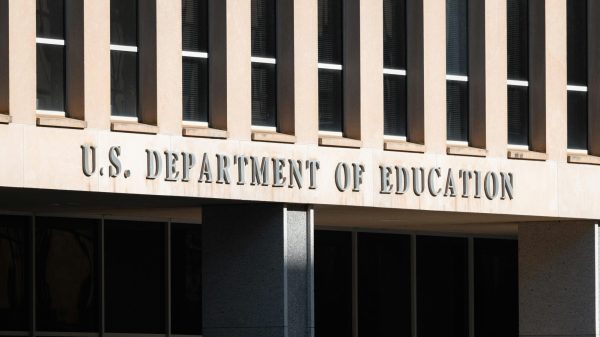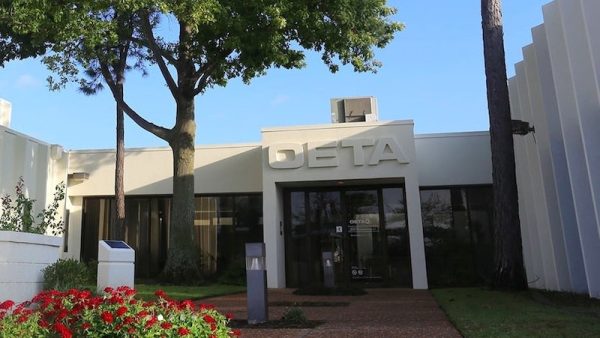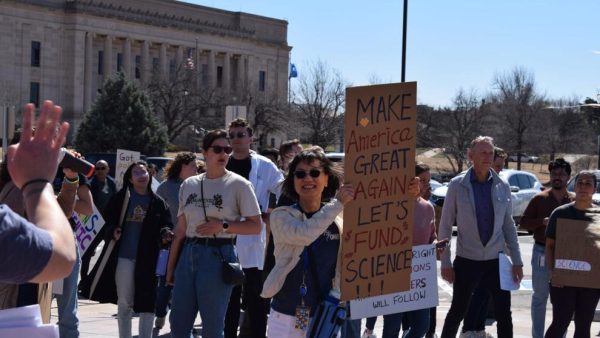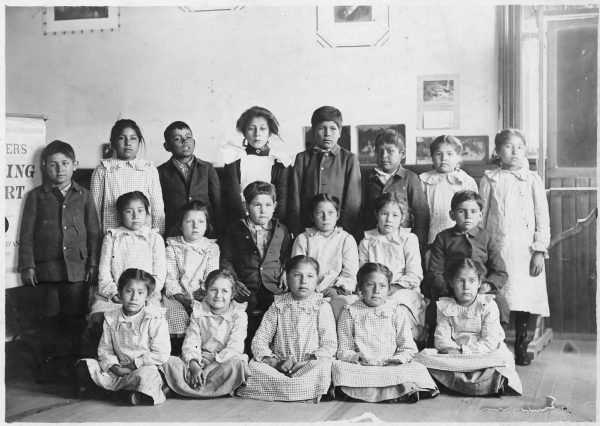Panel on protests, pandemic for journalism podcast concludes
Journalists gathered for a Gaylord News-hosted panel to discuss state history and navigating the past year’s public health crisis. Panel participants included (left to right) M. Scott Carter, Storme Jones and Mike Boettcher. (Miranda Vondale Foster/Gaylord News)
NORMAN, Oklahoma — For the second installment of a special panel episode of the Gaylord News podcast “Survive & Thrive,” three Oklahoma journalists discussed what lessons can be learned from the state’s tragedy-filled history.
Mike Boettcher, M. Scott Carter and Storme Jones spoke with Gaylord News reporters KaraLee Langford and Brooklyn Wayland about how they have grappled with Oklahoma’s past and present trauma, including the Trail of Tears, the Tulsa Race Massacre, the Dust Bowl, the Oklahoma City bombing and the COVID-19 pandemic.
Jones recalled watching on television a protest that was gathering near downtown Oklahoma City on May 30, 2020 following the Minneapolis police killing of George Floyd, two months after Governor Kevin Stitt had declared a state of emergency regarding coronavirus cases in Oklahoma.
“We were surprised, and the [KWTV – News 9] station was caught off guard, and I think so were the police,” Jones said. “I think many people were caught off guard that first night.”
Jones remembered the pressure he felt while covering the protests on live broadcast, admitting he had never reported on anything like it before in any professional capacity.
“In the beginning, there’s a sense of heaviness, like we’ve got to say the right things, we’ve got almost a requirement to be poetic about what’s going on down here,” Jones said. “And then you quickly realize that’s not what you’re there for at all. You just are simply describing what you’re seeing, you’re doing live interviews, you’re just simply keeping people informed about what’s going on and giving them a play-by-play of what you see with your own eyes. It wasn’t time to pontificate or make big statements. But the product of what we were able to do, what we were able to witness and the people we were able to talk to, I think was really important.”
Jones said that his own journalistic curiosity was what helped him adapt rationally to the tensions that manifested at the protests over several nights.
“It definitely changed from talking to people about their experiences and what brought them out — I remember talking to a teacher saying she was out there for her students and having conversations like that — to the point where you’re in the middle of tear gas coming in from law enforcement,” Jones said. “I got hit in the foot with a tear gas canister from police, and then at one point we had water bottles and rocks being thrown our way by a crowd, so those are two completely different situations.”
The killing of George Floyd and the resulting protests against police brutality during the summer of 2020 sparked a nationwide conversation on issues of racism and social justice — a conversation that Boettcher and Carter said that Oklahoma had already been reckoning with in preparation for the 100-year remembrance of the 1921 Tulsa Race Massacre.
“That wasn’t talked about at all, the Race Massacre, when I was graduating from Ponca City High School in 1972,” Boettcher said. “But now it’s something that I would say most high school teachers in this year as we’re coming up to that 100-year anniversary are talking about. And that’s why I think, if you’re speaking generationally, that’s a good thing.”
Carter said he would encourage younger generations to talk more about historical injustices such as the Trail of Tears and the Tulsa Race Massacre and to dig deeper.
“With regards to race relations, Oklahoma media has improved a great deal from beginning in the early ’80s on,” Carter said. “Before that, it wasn’t as good as it could have been. As late as the 1960s, the Daily Oklahoma used a racial slur in an editorial on the front page, and it sparked protests. The Black community marched in protest against it.”
“You talk about the Tulsa Race Massacre, but one of the reasons for that massacre were the two newspapers in Tulsa, and they are partially responsible for that,” Carter said, referring to incendiary headlines that appeared in the Tulsa World and the now-defunct Tulsa Tribune that falsely accused a young Black man of attempting to sexually assault a teenaged White girl. “It’s come a long way, and it’s gotten a lot better, but we had a long way to go,” Carter said.
While discussing Oklahoma’s advance toward inoculating its adult population against COVID-19, Carter mentioned Governor Bill Anoatubby of the Chickasaw Nation as a leader instrumental in the state’s vaccination drive, which also caused the conversation to shift from the “White settler prism” to the Native American experience.
“Maybe that’s where we get our resilience from is the tribes, who were forced to march here on several trails of tears, not just one, and have now risen to be the most powerful entities in the state,” Boettcher said.
Jones said that the demographics of the state have begun to change in recent years, and the shift toward diversity has naturally brought about a willingness to publicly address issues of race that had been previously swept under the rug.
“The people who have a seat at the table, who get to tell these stories and who get to make these decisions — whether it be in the media, community leaders — that has changed as well,” Jones said.
“Survive & Thrive” is a weekly 24-episode podcast series in which Langford and Wayland interview Oklahomans from all walks of life on how to cope with the COVID-19 pandemic and recent racial upheaval. New episodes are released every Wednesday and are available on streaming platforms such as Spotify and Apple Podcasts.
To listen to the first part of this episode, which was released on March 24, click here.
Gaylord News reporters Miranda Vondale Foster, Jessie Christopher Smith and Zhixuan Fan contributed to this report.
Gaylord News is a reporting project of the University of Oklahoma Gaylord College of Journalism and Mass Communication.

